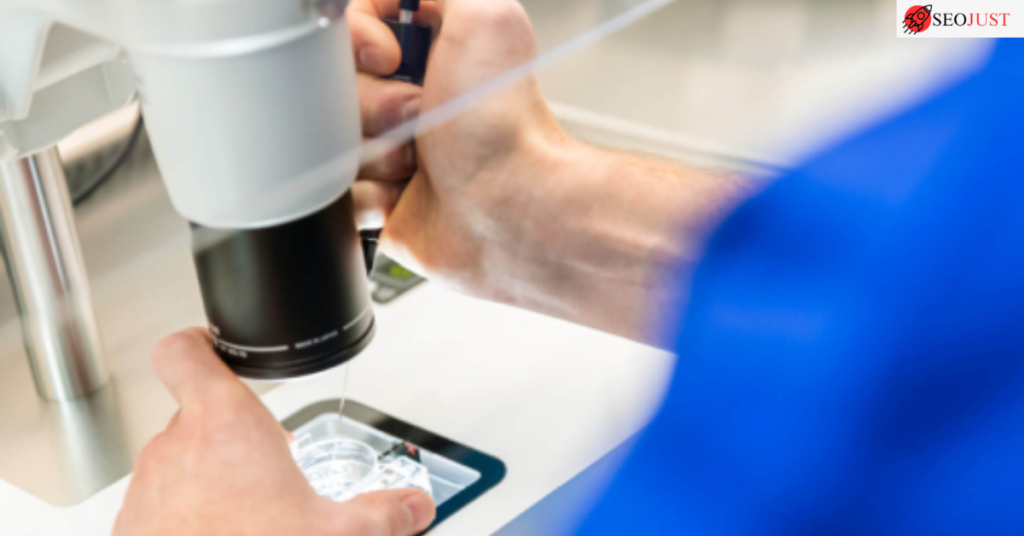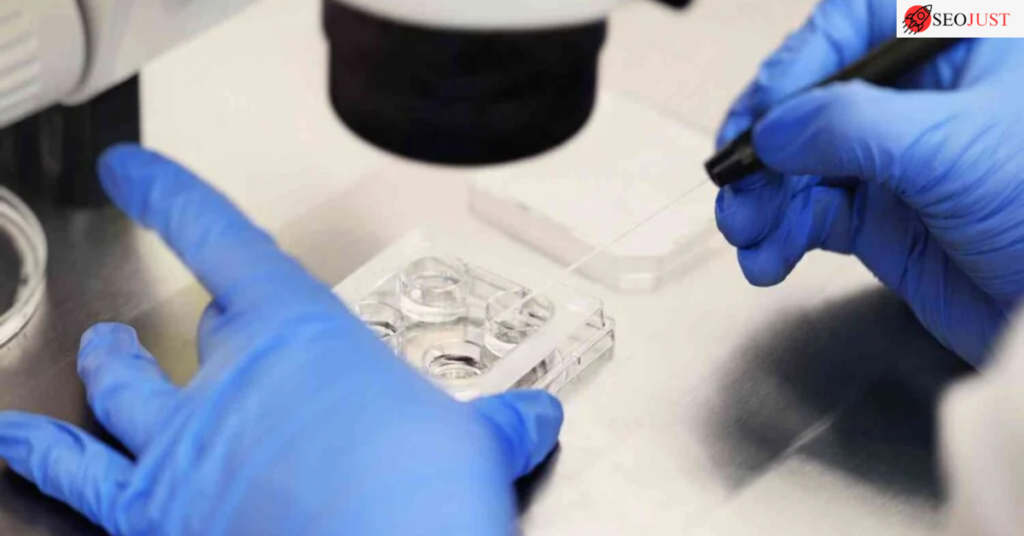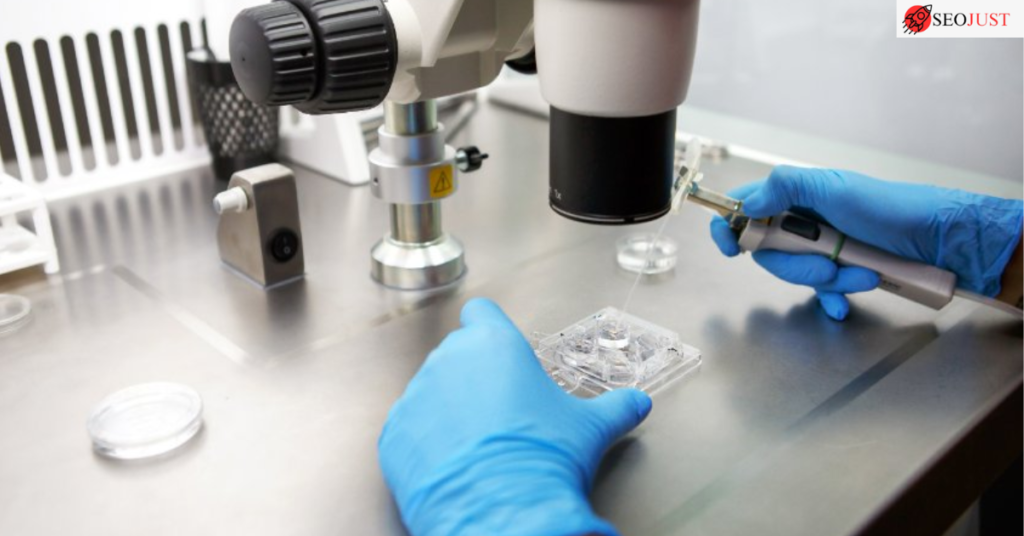Assisted Reproductive Technology jobs refers to advanced methods that help individuals or couples conceive. It includes treatments like in-vitro fertilization (IVF), sperm and egg freezing, and artificial insemination. ART uses technology to support and monitor reproductive processes.
I love to read about tech, as an expert in tech from last 8 years, I am reviewing some of the best reproductive technology jobs out there!
Fertility, on its own, can only be understood at levels that are purely biological, and therefore it does not make any sense to adopt technologies as others (wearables, tracking devices, etc.) while the fertility is being influenced by a human being.
ART is a science based method that helps people to beat infertility with the help of scientific methods and precision tools. Today, there are more than 2 million ART treatments per year globally and the numbers are growing.
Read More: Andre Amin Hakkak, White Oak Global Advisors LLC
Mission of Assisted Reproductive Technology (ART)
ART is founded for delivering reliable fertility solutions to people to help them achieve parenthood. The goal of ART is to reduce barriers to conception. Some may be due to age, genetics or medical conditions.

The hoped improvement also is to increase success rates with automation, AI tools, and personalized care plans. Safe and effective treatments while ensuring convenience for patients using smart technology is the objective of the ART. Other clinics, particularly, still pay lavish attention to compassion and ethical practice along with technology.
Read More: What is FintechZoom Pro
Quick Fix Table: Top 9 Assisted Reproductive Technology (ART) Jobs
| Job Title | Summary | Pay Range |
|---|---|---|
| Embryologist | Develops and monitors embryos. | $52K – $117K |
| IVF Technician | Supports egg retrieval and lab tasks. | $50K – $75K |
| Data Analyst | Analyzes treatment data with AI. | $65K – $90K |
| AI Specialist | Builds predictive fertility models. | $85K – $130K |
| Lab Manager | Manages lab operations and staff. | $70K – $110K |
| IT Specialist | Maintains clinic software and platforms. | $60K – $95K |
| Cryopreservation Specialist | Oversees freezing and storage. | $55K – $80K |
| Patient Coordinator | Guides patients through treatments. | $40K – $60K |
| Business Manager | Supplies tools and builds partnerships. | $75K – $150K |
This quick view of ART jobs highlights roles blending tech, healthcare, and data science with competitive pay.
Key Features of ART Technologies
ART uses state of the art tools and automated systems to increase efficiency and improve success rates. Here are its key features:
1. Embryo Monitoring using Automated Systems
One automation tool has 24/7 real time embryo monitoring, and reduces human error by 30%. And the embryos develop within optimal conditions without manual intervention.
2. Cryopreservation Technology
Egg and sperm freezing and freezing your embryo for later use can be done with ART. Cryopreserved samples can sit and be preserved for up to 10 years and beyond without losing quality.
3. AI for Better Decisions
Data is analyzed by artificial intelligence to pick healthy embryos and predict when procedures should be performed. It increases the pregnancy success rates by 15 to 20 percent.
4. Data Management Platforms
In the fast growing field of clinics a cloud based system is used for thousands of patient records. These systems reduce human errors and organize the clinic works.
5. Remote Monitoring with Smart Devices
With apps and wearable devices, patients can monitor hormone levels and treatment schedules. It reduces patient visits in person by 50 percent, making it easier for patients.
Read More: Get_Ready_Bell:Client_Pulse
How ART Technologies Help Patients and Industries
Art technologies are of benefit to both patients and the tech industry. This makes treatments more accessible, and new markets for software and automation.

1. Data-Driven Solutions Improve Success Rates
AI powered platforms are used by ART clinics to analyze data from treatment. This improves prediction of which methods will work best, upping success rates by 10-15%.
2. Automation Increases Productivity
Support tools automate repetitive lab actions, and they relieve the load by 50–70%. This cuts back on treatment timelines and, more importantly, makes it easier for the embryologists to get on with the more complex procedures.
3. Smart Technology Enhances Patient Experience
Reminders come from apps and wearable devices, and your hormones and medication are tracked. These tools report 30-40% less stress during treatment.
4. Growth of the Tech Industry through ART
Fertility apps, lab management software, and monitoring tools are all created to fill that ART need. With the help of AI platforms for fertility management, many of the startups are growing into an engine for creating new jobs in the tech world.
These technologies are far beyond medicalized solutions as they open up new opportunities for innovation and business development.
Read More: Alabama Technology Network
The Future of Assisted Reproductive Technology
The future of ART is tied to advances in AI, robotics, and data science. Here are some developments to expect:

1. AI-Driven Predictive Models
AI will analyze millions of data points to predict the best treatments for patients. This will increase the accuracy of fertility procedures by 20-30%.
2. Robotics in Embryology Labs
Robots will handle tasks like injections and embryo transfers with high precision. These systems will reduce errors and improve efficiency.
3. Virtual Care and Remote Monitoring
Telehealth will become a standard part of ART, with doctors offering virtual consultations and remote hormone monitoring. This will make treatments more accessible, especially in remote areas.
4. Personalized Treatments through Genetic Insights
Genetic tools will help create custom treatment plans based on each patient’s unique profile. This will increase success rates by 10-20% and minimize risks.
5. Blockchain for Data Security
Blockchain will secure patient data, ensuring that records are safe, transparent, and tamper-proof.
The future of ART will focus on automation, personalization, and security. These trends will make treatments more efficient and accessible.
Read More: Zhuoxin Data Technology Leadership
Job Scope in Assisted Reproductive Technology (ART)
The rapid growth of ART is creating new career opportunities across multiple fields. Here are the key Assisted Reproductive Technology jobs roles within ART:

1. Embryologists and Lab Technicians
Embryologists oversee the development of embryos, while lab technicians handle sample tracking and automation tools. This role requires attention to detail and technical skills.
2. Data Analysts and AI Specialists
Data analysts study patient records and treatment outcomes to identify trends and improve methods. AI specialists develop algorithms for embryo selection and cycle predictions.
3. Software Developers and IT Professionals
Developers create apps and software platforms for fertility management. IT professionals maintain these systems, ensuring smooth clinic operations.
4. Robotics Engineers
Engineers design robots and automated tools for lab use. These systems handle delicate procedures with precision, reducing human error by 30-40%.
5. Business Development and Sales Experts
Sales teams connect clinics with tech suppliers, providing monitoring devices, software, and lab equipment. Business development professionals explore new markets for fertility technologies.
6. Healthcare Technologists
Healthcare technologists manage remote monitoring tools that allow patients to track treatments from home. They ensure devices work correctly and provide real-time data to doctors.
ART offers a wide range of Assisted Reproductive Technology jobs that blend healthcare, technology, and engineering. As the field grows, more opportunities will emerge.
Read More: How Does Granular Recovery Technology Work
Top 9 Jobs in Assisted Reproductive Technology (ART) with Pay Rates
The Assisted Reproductive Technology (ART) field offers exciting career opportunities. As more individuals and couples seek fertility treatments, the need for skilled professionals in labs, clinics, and technology development is increasing.
ART combines science, technology, and patient care, providing jobs that offer both fulfillment and competitive salaries. Here’s a look at nine top jobs in the ART field, with job roles, responsibilities, and pay ranges.
1. Embryologist
Role:
Embryologists are responsible for developing and monitoring embryos during fertility treatments like in-vitro fertilization (IVF). They handle eggs, sperm, and embryos with precision, ensuring optimal conditions for growth.
Pay Range:
$52,000 to $117,000 annually.
Details:
This role requires attention to detail, as embryologists perform sensitive procedures such as fertilization and embryo freezing. Experience in lab environments is essential.
2. IVF Technician
Role:
IVF technicians assist doctors during egg retrieval and fertilization procedures. They also prepare lab environments and monitor fertilization processes.
Pay Range:
$50,000 to $75,000 annually.
Details:
IVF technicians manage the handling of biological samples and monitor cryopreservation (freezing) processes to ensure quality storage.
3. Reproductive Health Data Analyst
Role:
Data analysts work with AI platforms and large datasets to track patient outcomes and improve fertility treatments. They find patterns and trends to predict treatment success.
Pay Range:
$65,000 to $90,000 annually.
Details:
Analysts interpret treatment records and hormone data, guiding clinics in optimizing procedures for better results. Skills in data science and analytics tools are required.
4. AI Specialist for Fertility Clinics
Role:
AI specialists design algorithms that predict the best times for ovulation and embryo implantation. They also build models to improve success rates.
Pay Range:
$85,000 to $130,000 annually.
Details:
This role involves developing machine learning models to automate embryo selection and treatment cycles. Experience with predictive AI tools is a must.
5. Lab Manager
Role:
Lab managers oversee daily lab operations in fertility clinics, ensuring that all procedures run smoothly. They manage staff, equipment, and workflow compliance.
Pay Range:
$70,000 to $110,000 annually.
Details:
This role requires strong management and organizational skills. Lab managers coordinate between scientists and doctors to ensure efficient operations.
6. Healthcare IT Specialist
Role:
Healthcare IT specialists manage patient management platforms and lab software systems. They ensure that all software and hardware function smoothly.
Pay Range:
$60,000 to $95,000 annually.
Details:
This role ensures system security, software updates, and troubleshooting to keep fertility clinics running without technical interruptions.
7. Cryopreservation Specialist
Role:
Cryopreservation specialists manage the freezing and long-term storage of eggs, sperm, and embryos. They monitor storage conditions to ensure sample quality.
Pay Range:
$55,000 to $80,000 annually.
Details:
These specialists use advanced freezing equipment to preserve samples for future use. Attention to detail is essential to maintain storage integrity.
8. Patient Coordinator
Role:
Patient coordinators guide patients through fertility treatment schedules. They handle appointments and act as liaisons between doctors, labs, and patients.
Pay Range:
$40,000 to $60,000 annually.
Details:
This role requires strong communication and organizational skills. Coordinators ensure patients have the information they need at every step.
9. Sales and Business Development Manager
Role:
Sales and business development managers work with clinics to supply lab equipment, software, and monitoring tools. They explore new markets and partnerships.
Pay Range:
$75,000 to $150,000 annually.
Details:
These professionals identify new business opportunities and build long-term partnerships with fertility clinics and technology providers.
Conclusion
Assisted Reproductive Technology jobs combines automation, AI, and smart tools to make fertility treatments more effective. It helps patients by offering personalized care, remote monitoring, and predictive models. At the same time, ART opens new opportunities for tech companies and professionals in data science, robotics, and software development.
The future of ART will involve more automation, virtual care, and personalized treatments. As the demand for these services grows, more jobs will become available. ART technologies will continue to push innovation forward, helping both individuals and industries achieve new milestones.
Read More: Logitech Dongle Software




